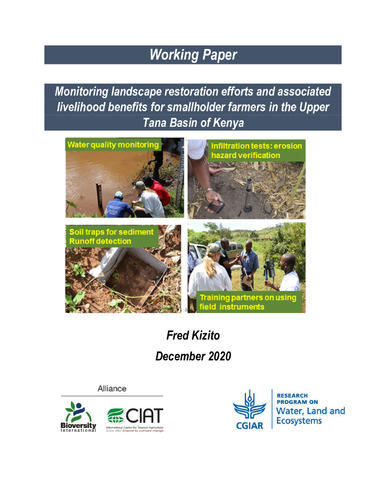Monitoring landscape restoration efforts and associated livelihood benefits for smallholder farmers in the Upper Tana Basin of Kenya
The Upper Tana Basin is an area that is very prone to soil erosion. In this study, we worked closely with 10 farmers in the Upper Tana Basin who were implementing a range of different land management options, specifically soil water conservation with terraces and forage grass strips. We installed and monitored erosion and runoff detectors in the farming landscapes to quantify how much soil was running off the surface. We compared how different land management practices if used in combination reduce soil erosion and result in livelihood benefits. The control areas that did not have SLM options showed substantial differences when compared to the areas with SLM within the different micro-watersheds over time and space. The farms without SLM produced less food but consumed most of their food produce and barely had any surplus to sell. For all micro-watersheds, SLM consistently consumed less food than the food produce they sold. This aspect has implications on the livelihood options of farmers. The interventions with SLM offered viable livelihood options for farmers while at the same time meeting their food security and nutritional needs compared to those without SLM that lacked the purchasing power due to lower market sales of their produce.

